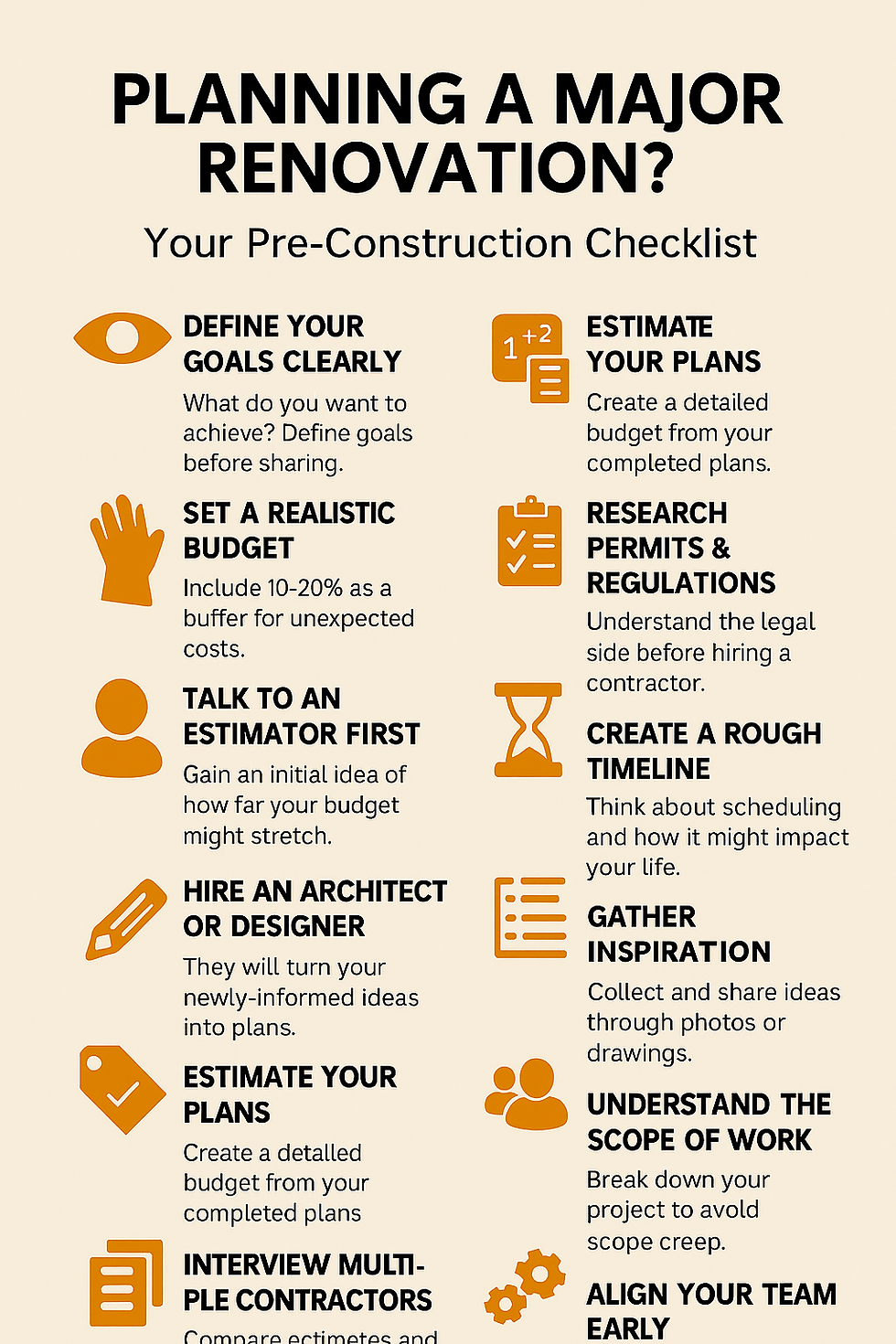Essential Maths Every Building Contractor Should Know
- Deen Gabriel

- Jun 6
- 3 min read
In the construction industry, precision isn't just important—it’s essential. Whether you're preparing quotes, calculating material quantities, or setting out a site, the ability to work confidently with numbers can make or break a project. This article outlines the key math skills every building contractor should know, all in metric units.

1. Basic Arithmetic
At the foundation of all construction math is simple arithmetic:
Addition, subtraction, multiplication, division
Working with decimals and percentages
Rounding for estimating quantities and pricing
These skills are applied daily—whether you're splitting costs between trades or calculating how many bricks to order.
2. Measurement and Conversions
Contractors must be comfortable with measuring and converting units:
Millimetres (mm), centimetres (cm), metres (m)
Square metres (m²) for area calculations (e.g., tiling, painting)
Cubic metres (m³) for volume (e.g., concrete, soil, fill)
Converting between litres and cubic metres (1 m³ = 1,000 litres)
Understanding and applying these conversions helps prevent material shortages or costly overruns.
3. Geometry for Area and Volume
Understanding basic shapes and their formulas is critical:
Area:
Rectangle or square:
Area = Length × Width
Triangle:
Area = ½ × Base × Height
Circle:
Area = π × Radius²(π ≈ 3.1416)
Perimeter:
Add up all sides to determine total edge length (used for fencing, formwork, etc.)
Volume:
Rectangular volume:
Volume = Length × Width × Height
Cylinder (e.g., round columns):
Volume = π × Radius² × Height
4. Basic Trigonometry
Used for determining slopes, stairs, roof angles, and ramp gradients:
Pythagoras' Theorem:
If you know two sides of a right-angled triangle:
a² + b² = c²
Sine, Cosine, and Tangent help find unknown sides or angles:
Example:
cos(θ) = adjacent / hypotenuse
This can be used to calculate rafter lengths or the rise and run of stairs.
5. Estimating Materials
Accurate estimating is a must. Here are typical benchmarks:
Bricks: ~55 bricks per m² of a standard 110mm thick wall
Tiles: Coverage depends on size, but always add 10–15% for cuts and waste
Paint: 1 litre typically covers 8–10 m² (per coat, on smooth surfaces)
Screed: For a 50mm thick layer, you'll need 0.05 m³ per m²
Concrete: Calculate volume (m³), then use mix ratios (e.g., 1:2:3 for cement:sand:stone)
6. Financial Math
Understanding financial basics ensures profitable projects:
Labour rates and daily costs
Markups and profit margins (e.g., adding 20% to material costs)
Discounts and bulk pricing
VAT calculations (15% in South Africa)
Break-even analysis for fixed and variable costs
7. Reading Plans and Working to Scale
Construction drawings are often done at a scale, like 1:100.
1 cm on the plan = 1 m in real life
Always check the title block for the scale
Use scale rulers or convert measurements with a calculator
This is crucial when setting out walls, driveways, or plumbing runs.
8. Concrete and Mix Ratios
Know how to calculate volumes and mix materials:
Volume:
Length × Width × Thickness
(e.g., a 4 m × 3 m slab at 100mm thick = 1.2 m³)
Common mix ratio:
1 part cement : 2 parts sand : 3 parts stone
One cubic metre of concrete typically requires:
7–8 bags of cement (50 kg each)
0.6 m³ of sand
1.2 m³ of stone
9. Spreadsheets for Construction
Modern contractors should know how to use Excel or Google Sheets for:
Costing and markups
Generating bills of quantities
Tracking material use
Payment and cash flow planning
Spreadsheets help reduce human error and speed up quote preparation.
Final Word
You don’t need to be a mathematician—but being strong in the practical math of construction will save you money, improve your accuracy, and build trust with clients. Whether you’re pricing a job, planning concrete, or reading site plans, these are the skills that make a contractor truly professional.






Comments